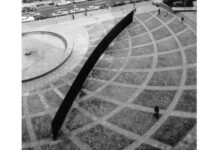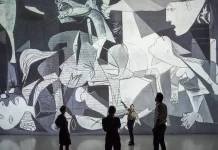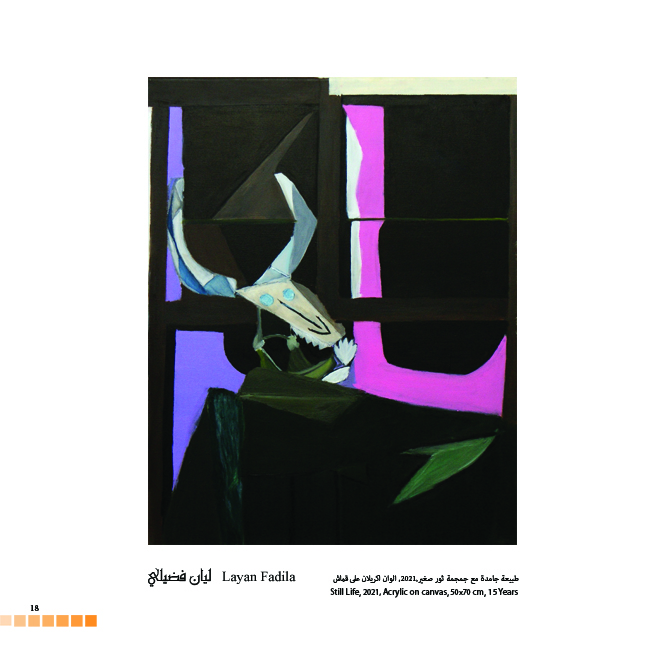Introduction:
Discipline-Based Art Education (DBAE) is a comprehensive approach to teaching art that transcends mere creativity and aesthetics. It is a methodical and structured framework designed to impart a deep understanding of art by integrating four fundamental disciplines: art production, art criticism, art history, and aesthetics. DBAE seeks to cultivate not only the artistic skills of students but also their critical thinking abilities, cultural awareness, and appreciation for the rich tapestry of human creativity throughout history. This introduction will delve into the core principles and components of Discipline-Based Art Education, shedding light on how it equips students with a well-rounded and meaningful artistic education. As we explore the essence of DBAE, we will uncover its potential to not only nurture budding artists but also foster a lifelong appreciation for the arts in every learner.
Art education
Art education, particularly in the context of Discipline-Based Art Education (DBAE), represents a structured and comprehensive approach to teaching and learning the visual arts. Developed in the late 20th century, DBAE emerged as a response to the need for a more systematic and rigorous way to educate students about art. This method is founded on the belief that art education should encompass four core disciplines: art production, art criticism, art history, and aesthetics.
- Art Production: At the heart of DBAE lies the creation of art itself. Students are encouraged to engage in hands-on artistic activities, experimenting with various techniques, mediums, and styles. The emphasis here is on fostering creativity and personal expression while developing technical skills.
- Art Criticism: DBAE encourages students to think critically about art. They are taught to analyze, interpret, and evaluate artworks, both their own and those of others. This discipline enables students to articulate their thoughts and feelings about art, deepening their understanding and appreciation of it.
- Art History: To comprehend the context and evolution of art, students study the history of art. This includes exploring different periods, styles, and artists. By examining the cultural and historical contexts in which art was created, students gain insights into the significance of art throughout human history.
- Aesthetics: The study of aesthetics within DBAE focuses on the philosophical and theoretical aspects of art. Students explore concepts like beauty, form, and meaning, engaging in discussions that encourage them to reflect on the nature of art and its role in society.
DBAE is not limited to teaching art in isolation; it often integrates these four disciplines to provide a holistic art education. This approach encourages students to connect what they create with what they observe, critique, and learn about in the broader context of art and culture.
Discipline-Based Art Education aims to produce well-rounded individuals who not only possess artistic skills but also have the ability to think critically, appreciate the diversity of human creativity, and engage with art on a meaningful level. It equips students with a comprehensive understanding of art and fosters a lifelong appreciation for the visual arts, enabling them to become informed and engaged participants in the world of art and culture.
Main approaches in art education
Art education encompasses various approaches and methodologies designed to foster creativity, critical thinking, and cultural awareness in students. These approaches are often tailored to specific age groups, educational settings, and learning objectives. Here are some of the main approaches in art education:
- Discipline-Based Art Education (DBAE): As mentioned earlier, DBAE is a structured approach that emphasizes four core disciplines: art production, art criticism, art history, and aesthetics. It aims to provide a comprehensive and well-rounded art education by integrating these disciplines.
- Studio-Based Learning: Studio-based art education places a strong emphasis on hands-on artistic creation. Students are encouraged to explore various mediums, techniques, and styles in art studios. This approach prioritizes the development of practical skills and personal expression.
- Art Appreciation: Art appreciation approaches focus on developing students’ ability to understand and enjoy art. This involves studying and discussing artworks, learning about different art movements, and exploring the cultural and historical contexts in which art was created.
- Visual Culture Education: Visual culture education expands the scope of art education to include everyday visual experiences and media. It encourages students to critically analyze the visual elements of popular culture, advertising, and media, considering their impact on society and identity.
- Constructivist Approach: The constructivist approach to art education is rooted in the idea that students construct their understanding of art through active engagement and hands-on experiences. It encourages students to explore and create art in a way that aligns with their unique perspectives and interests.
- Inquiry-Based Learning: This approach promotes critical thinking and problem-solving skills by encouraging students to ask questions and investigate art-related concepts independently. Students actively engage with artworks and art processes to discover answers and insights.
- Interdisciplinary Art Education: Interdisciplinary approaches integrate art with other subject areas, such as science, mathematics, literature, and history. This fosters connections between different areas of learning and encourages students to see the relationships between art and other disciplines.
- Cultural and Global Perspectives: Art education can also incorporate a cultural and global perspective, encouraging students to explore art from different cultures and time periods. This approach promotes cross-cultural understanding and appreciation for diverse artistic traditions.
- Community-Based Art Education: Community-based art education often involves collaborative projects that address social or environmental issues within a community. Students work together to create art that has a meaningful impact beyond the classroom.
- Technology and Digital Art Education: With the increasing importance of technology, this approach incorporates digital tools and multimedia in art education. Students explore digital art, graphic design, and new media as part of their creative process.
The choice of approach in art education can vary based on the goals of the curriculum, the age and developmental stage of the students, and the educational context. Many art educators combine elements from different approaches to create a well-rounded art education experience for their students.




















